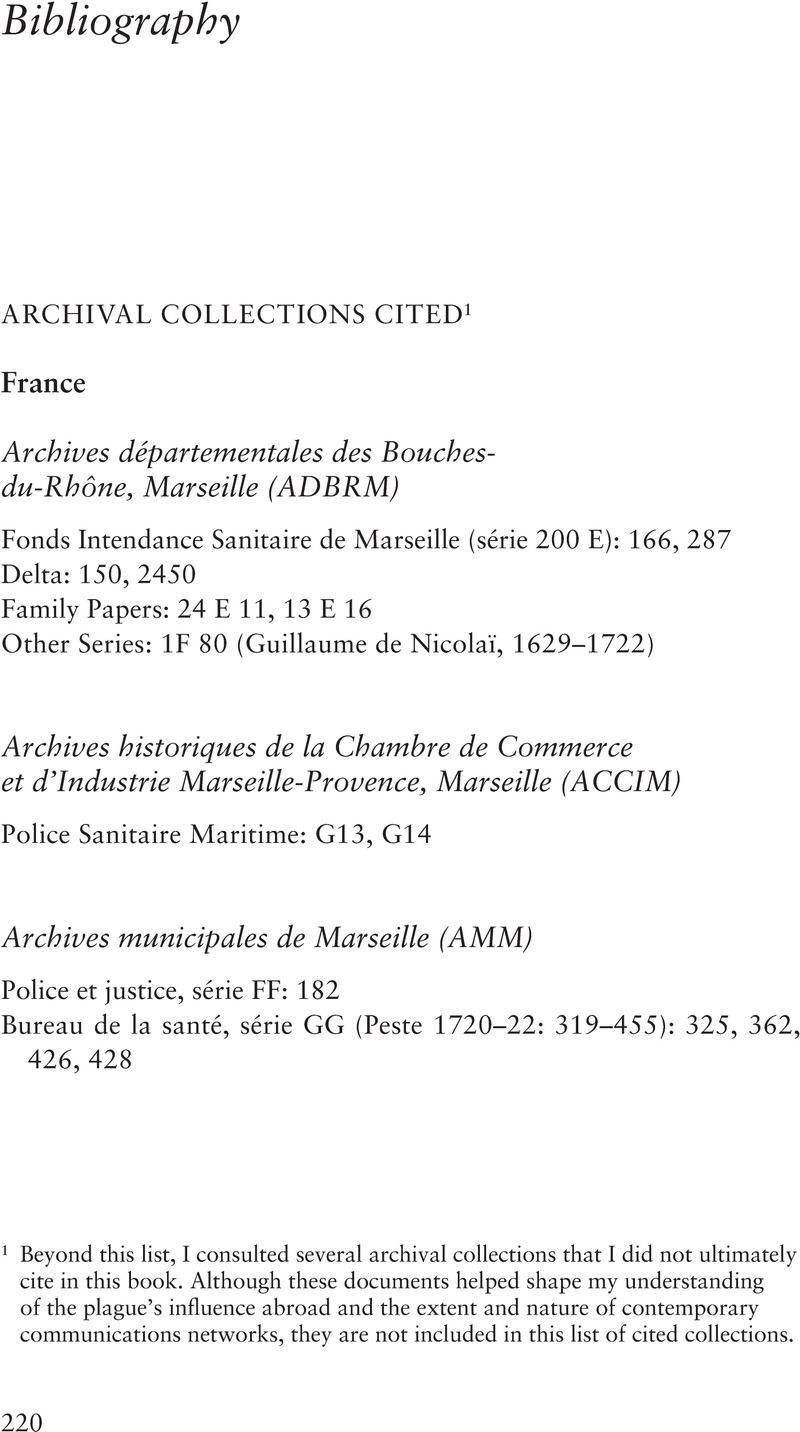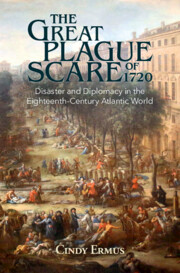Book contents
- The Great Plague Scare of 1720
- Global Health Histories
- The Great Plague Scare of 1720
- Copyright page
- Dedication
- Contents
- Acknowledgments
- Abbreviations
- Introduction
- 1 Plague in Provence
- 2 “L’état le Plus Exposé”
- 3 “A Scheme so Barbarous and so Destructive”
- 4 The Spanish Plague That Never Was
- 5 Entangled Empires
- Epilogue
- Bibliography
- Index
- References
Bibliography
Published online by Cambridge University Press: 11 November 2022
- The Great Plague Scare of 1720
- Global Health Histories
- The Great Plague Scare of 1720
- Copyright page
- Dedication
- Contents
- Acknowledgments
- Abbreviations
- Introduction
- 1 Plague in Provence
- 2 “L’état le Plus Exposé”
- 3 “A Scheme so Barbarous and so Destructive”
- 4 The Spanish Plague That Never Was
- 5 Entangled Empires
- Epilogue
- Bibliography
- Index
- References
Summary

- Type
- Chapter
- Information
- The Great Plague Scare of 1720Disaster and Diplomacy in the Eighteenth-Century Atlantic World, pp. 220 - 245Publisher: Cambridge University PressPrint publication year: 2022



